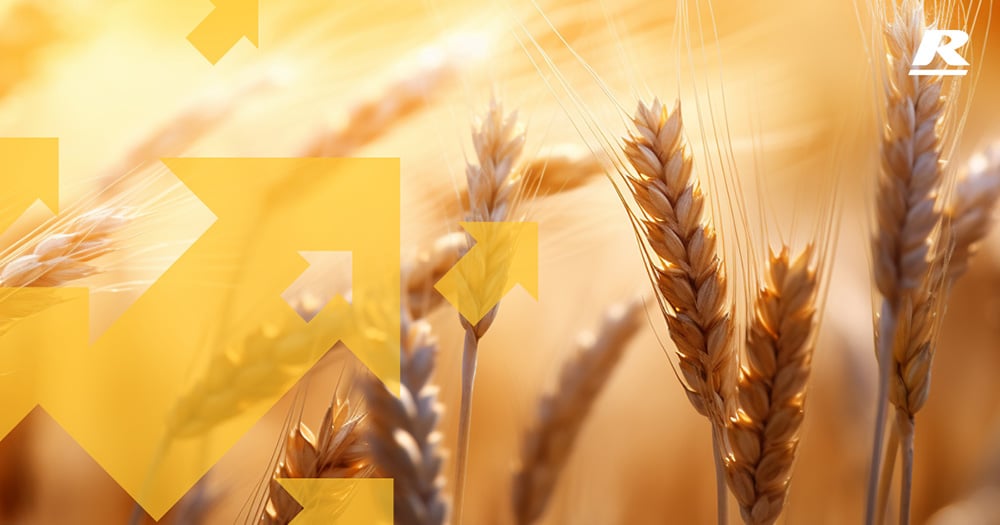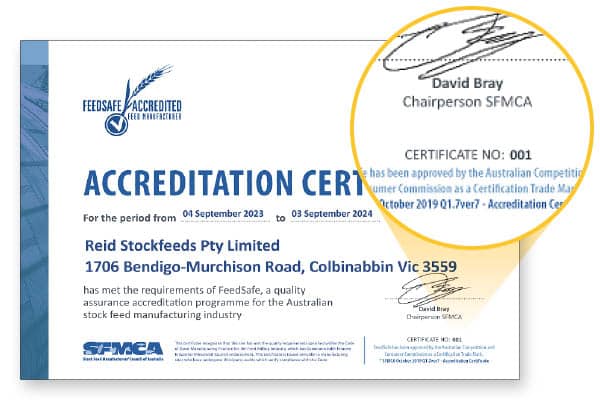The Evolution of Stockfeed
The stockfeed industry in Victoria, has a rich history that reflects the evolution of agricultural practices and the changing needs of livestock farming in the region. From its early beginnings to the modern era, this industry has played a crucial role in supporting the growth and development of Victoria’s agricultural sector.
As Reid Stockfeeds celebrates its 40th year in the stockfeed business, we reflect on how far we have come as an industry and the long lasting legacy that continues to innovate and challenge the way animals are fed.
The innovations come from all facets of agriculture, it isn’t limited to the constant shift in tailor made feed solutions, it also exists from vital inputs essentially sourced from likeminded industry partners. Whether it be through technological advances in animal nutrition, understanding and adapting to new sciences or simply partnering with growers who supply a premium product, all facets co-ordinate to ensure Australian animals have the ability to thrive in a vast array of conditions. Innovative feed millers have collaborated with animal production partners with a common passion to feed our communities in a sustained, efficient and responsible manner. It isn’t something that has happened overnight but the Victorian stockfeed industry evolved out of the necessity to sustain a young growing colony.
As the population increased in Victoria due to the Gold rush, agricultural production increased to feed the growing population. With this expansion, the demand for stockfeed grew, leading to the emergence of small-scale feed mills that processed grains and fodder for local farmers. These mills marked the beginnings of a more organised stockfeed industry.
Having grown up on a sheep and cattle property myself then moving into the stockfeed industry 20 years ago, I’ve witnessed first-hand just some of the developmental changes and have been fortunate to see the positive impact the Reid family has contributed to the industry and its ongoing development.
Technological innovations, such as mechanised milling equipment and transportation infrastructure, allowed for increased production capacity and improved distribution of stockfeed products. The Reid family have been at the forefront in the need for establishment of dedicated species feed mills and the use of modern processing methods to produce more nutritious and cost-effective animal feeds. In the initial infancy of what we consider modern stock feeding practices there was a need to collaborate with industry associations aimed at promoting the stockfeed sector. These organisations played a pivotal role in standardising feed production, quality control, and knowledge sharing among producers. The Victorian Stock Feed Manufacturers Association, founded in 1953, is one such example of a group that supported the growth and development of the industry. The need to establish standards within the industry became apparent and accreditations such as Feedsafe were orginally designed with influence from committee member of the day, Ian Reid, to assist in producing safe and nutritious animal feed. Our Colbinabbin Site is evidence to this having recorded the original 001 certificate for Feedsafe.
As Reid Stockfeeds continued to expand, the stockfeed industry in Victoria continued to modernise. Producers began to invest in research and development to create more specialised and nutritionally balanced feeds tailored to the needs of different livestock sectors, including poultry, dairy, and beef production. As a result, Victoria became a major player in the Australian stockfeed industry. The stockfeed industry in Victoria, like many others, faces ongoing challenges related to environmental sustainability, feed safety, and ethical considerations. This has led to a greater emphasis on sustainable sourcing of raw materials and the development of feeds that minimize environmental impact. Furthermore, regulatory changes have placed a strong emphasis on food safety and quality control in the production of stockfeed.
The stockfeed industry in Victoria continues to evolve and adapt to the changing needs of the agricultural sector. It plays a critical role in supporting the state’s livestock producers, helping them to raise healthy and productive animals. As the industry faces challenges related to climate change and increasing global demand for food, it will be important to continue innovating and improving practices to ensure a sustainable future for both the industry and Victoria’s agriculture as a whole.
The history of the stockfeed industry in Victoria is a story of adaptation, innovation, and the crucial role it has played in supporting the growth of livestock farming in the region. From its humble beginnings to its modern, technology-driven state, the stockfeed industry remains a vital component of Victoria’s agricultural landscape. Reid Stockfeeds have played a proud and integral role over the last 40 years in facilitating the opportunity for Victoria’s thriving animal production sector.
To increase your livestock farming gains & expert nutritional feeding advice please call 1300 REID FEED or enquire here >
 Author
Author
Justin Fay
Commodity Manager


 Author
Author